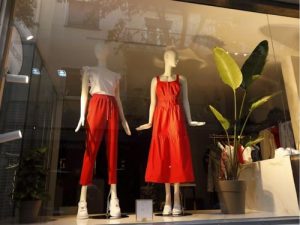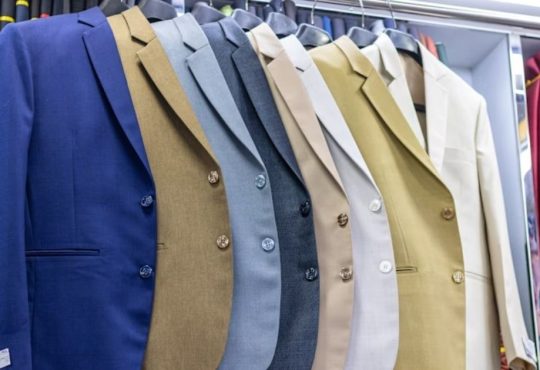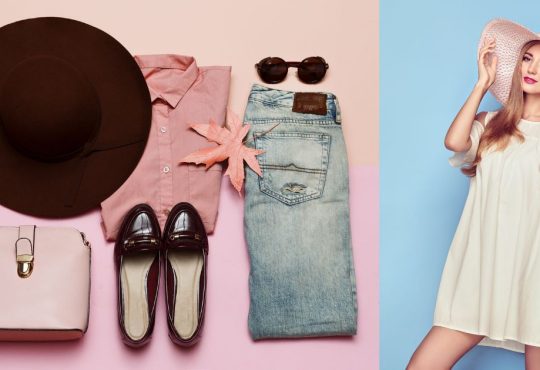Fashion has always been about reinvention, but in 2025, it’s not just the clothes that are changing—it’s the way people access them. Fashion rentals, once limited to tuxedos and prom dresses, have become a mainstream phenomenon. Platforms now offer a wide range of styles, from everyday streetwear to luxury handbags and statement jewelry, providing style-seekers with an alternative to traditional ownership. But why are so many people renting instead of buying? The answer lies in a mix of economics, sustainability, and a cultural shift toward valuing experiences over possessions.
The Allure of Flexibility

Fashion, by nature, is ever-changing—what’s trending today can easily become passé tomorrow. This fast-paced cycle often leaves style lovers torn between wanting to stay current and not wanting to invest in pieces that may lose their appeal within months. That’s where rentals shine. By offering either monthly subscriptions or pay-per-piece options, fashion rentals give consumers the freedom to keep their wardrobes fresh and exciting without the guilt of overspending or overstocking.
This flexibility opens the door to experimentation. Renters can test-drive bold statement bags, seasonal must-haves, or luxury designer items they might hesitate to purchase outright. It’s a way to indulge in variety and express creativity while sidestepping the clutter of accumulating too many pieces. Even better, it eliminates the dreaded “buyer’s remorse” that comes with costly impulse purchases. Instead of committing to a single style, fashion enthusiasts can continually rotate their choices, making rentals a smart, stylish, and sustainable way to engage with trends.
Cost-Effective Luxury
For decades, owning a designer handbag or couture gown was synonymous with prestige and exclusivity. Yet the hefty handbag or couture gown was synonymous with prestige and exclusivity. Yet the hefty price tags——often in the thousands—placed these pieces firmly out of reach for most. Fashion rentals have disrupted that dynamic, allowing shoppers to experience high-end luxury at a fraction of the cost—placing these pieces firmly out of reach for most.
This shift particularly resonates with Gen Z and millennials, who are redefining how luxury is consumed. Instead of tying up their budgets in one or two expensive items, they prefer rotating their style with frequent, affordable upgrades. Renting offers the sweet spot between indulgence and financial savvy—allowing them to enjoy the prestige of labels like Chanel, Prada, or Balenciaga without the long-term commitment. For this generation, luxury is no longer about permanent ownership but about the experience and visibility that comes with it.
And in today’s digital-first culture, that visibility matters. A rented outfit isn’t just a wardrobe choice—it’s social currency. Whether it’s a weekend brunch, a wedding, or a milestone birthday, the chance to wear designer pieces elevates not only the look but also the moment captured on Instagram, TikTok, or Snapchat. The appeal goes beyond clothing; it’s about curating a lifestyle, one post at a time, while keeping both closets and wallets comfortably light.
A Greener Alternative
The environmental toll of fashion has become impossible to overlook. From the mountains of textile waste piling up in landfills to the staggering water usage and chemical runoff from production, the industry ranks among the top contributors to global pollution. Against this backdrop, fashion rentals emerge as a more sustainable option, offering a circular model that prioritizes reuse over constant consumption. By keeping garments in rotation across multiple users, rentals extend the life span of each piece, slowing the cycle of overproduction and reducing the sheer volume of discarded clothing.
For eco-conscious shoppers, this shift feels both stylish and responsible. Renting allows them to explore new looks without feeding into the “wear once and toss” culture that dominates fast fashion. Instead of cluttering their closets with impulse buys, consumers can access a wide range of pieces when needed, then return them to be enjoyed by someone else. It’s fashion that satisfies the desire for novelty while aligning with values of minimalism and mindful consumption.
Many rental companies are also stepping up their sustainability commitments beyond the clothes themselves. By using eco-friendly packaging and biodegradable garment bags, and offering carbon-neutral shipping and low-impact cleaning methods, these businesses are rethinking every detail of their supply chain. By combining convenience with conscious practices, fashion rentals position themselves not just as a style solution but as a meaningful step toward a more responsible fashion future.
The Economics of Renting Fashion

There’s no denying it—fashion comes with a hefty price tag. Designer shoes, handbags, and dresses often cost thousands, making them unattainable for the average shopper. Rentals flip that script by democratizing access to luxury. Instead of paying $2,500 for a Gucci bag, consumers can rent it for under $100 a week, savoring the prestige of high fashion without the long-term financial burden. This model makes glamour not only attainable but practical, especially for one-time occasions like weddings, galas, or milestone celebrations where splurging on ownership doesn’t make sense.
In today’s economy, where inflation and rising living costs influence every spending decision, renting serves as a more prudent financial strategy. They allow style seekers to keep their wardrobes dynamic and trend-forward without draining savings or racking up credit card debt. Renting also eliminates the hidden costs of ownership—such as maintenance, storage, and depreciation—while still delivering the excitement of wearing exclusive designer pieces. It’s style without sacrifice, a perfect balance between aspiration and affordability.
Beyond saving money, the rental model also taps into a growing shift in consumer mindset. Younger generations, particularly millennials and Gen Z, prioritize experiences and flexibility over traditional ownership. For them, the value lies not in having a designer item tucked away in their closet, but in the ability to enjoy and showcase it when the moment calls for it. By aligning with this evolving perspective, fashion rentals aren’t just an economic alternative—they’re a redefinition of what luxury means in a modern, budget-conscious world.
Sustainability in the Spotlight
The fashion industry has long been under scrutiny for its environmental impact, and the numbers are sobering. Each year, millions of tons of textiles are dumped into landfills, while fast fashion brands continue to flood the market with cheaply made garments designed for short-term use. This cycle not only generates massive waste but also fuels water pollution, greenhouse gas emissions, and unsustainable resource consumption. In this context, fashion rentals are emerging as a practical and planet-friendly alternative—one that shifts the narrative from a disposable culture to one of mindful reuse.
By keeping each garment in circulation for longer, rentals maximize the value of clothing while reducing the need for constant new production. A dress that might otherwise be worn once and forgotten can instead be enjoyed by dozens of people, significantly extending its life cycle. This circular approach helps reduce textile waste and eases the demand on natural resources, offering a tangible way for consumers to participate in sustainability without compromising on style.
Rental companies are also going beyond the clothes themselves, integrating eco-friendly practices into every step of their operations. Many now use biodegradable or recyclable packaging, adopt low-impact cleaning methods, and offset shipping emissions with carbon-neutral programs. These initiatives signal that fashion rentals aren’t just about convenience or novelty—they represent a conscious shift toward a greener, more responsible industry. For eco-conscious shoppers, the choice to rent is both stylish and ethical, proving that personal expression and planetary care can go hand in hand.
Social Media and the “One-and-Done” Mentality
In the Instagram and TikTok age, fashion has become more performative than ever. Many consumers feel pressure to debut new outfits for every event or post, leading to the rise of the so-called “one-and-done” wardrobe culture. Rentals solve this problem perfectly. Why buy a flashy outfit you’ll only wear once when you can rent it, post it, and send it back guilt-free? This social media-driven demand for novelty is one of the biggest accelerators of the rental boom.
Renting vs. Owning
While rentals offer flexibility and accessibility, ownership still carries an irreplaceable emotional depth. Certain pieces transcend their material value to become markers of life’s milestones—a wedding dress preserved for decades, a leather jacket passed down from a parent, or a designer bag purchased after landing a dream job. These items weave themselves into personal narratives, holding memories that rentals cannot replicate. Ownership often reflects permanence and identity, grounding one’s style in pieces that are as much about sentiment as they are about fashion.
That said, renting brings its own kind of emotional payoff: the thrill of novelty and self-reinvention. There’s an undeniable excitement in stepping into a different persona with each new rental—today a bold, sequined gown for a gala, tomorrow a sleek designer tote for a city weekend. This constant rotation satisfies the desire for variety and creative expression without the long-term weight of ownership. Many consumers are finding harmony between the two approaches—investing in timeless staples like coats, denim, and quality footwear that anchor their wardrobes, while relying on rentals to experiment with statement pieces and seasonal trends. It’s a blend of sentiment and spontaneity, proving that fashion can be both deeply personal and endlessly playful.
What’s Next for Fashion Rentals?
The fashion rental industry is projected to experience exponential growth in the coming years, with brands and retailers increasingly adopting this model. Subscription services are expanding to include everything from maternity wear to ski outfits, while luxury houses are experimenting with curated rental lines to engage new audiences. Technology is also playing a key role: apps with AI-driven styling advice, virtual try-ons, and seamless returns are making renting more convenient than ever. It’s not far-fetched to imagine a future where renting clothes is as ordinary as ordering food delivery.
Renting as the Way Forward
The rise of fashion rentals signals a broader cultural transformation: one where fashion is no longer about owning more, but about enjoying more. It’s about reducing waste, saving money, and tapping into a constant cycle of newness. Whether you’re dressing for a job interview, a weekend wedding, or a TikTok video, rentals offer the thrill of fashion without the baggage—literally. In a world where flexibility is currency and sustainability is style, renting isn’t just a trend. It’s the future of fashion, and it’s here to stay.





